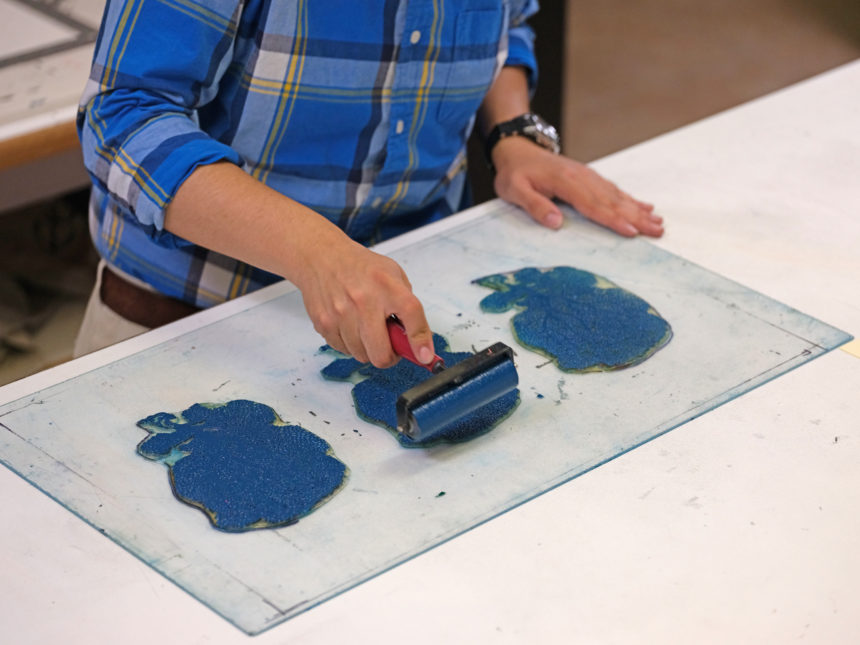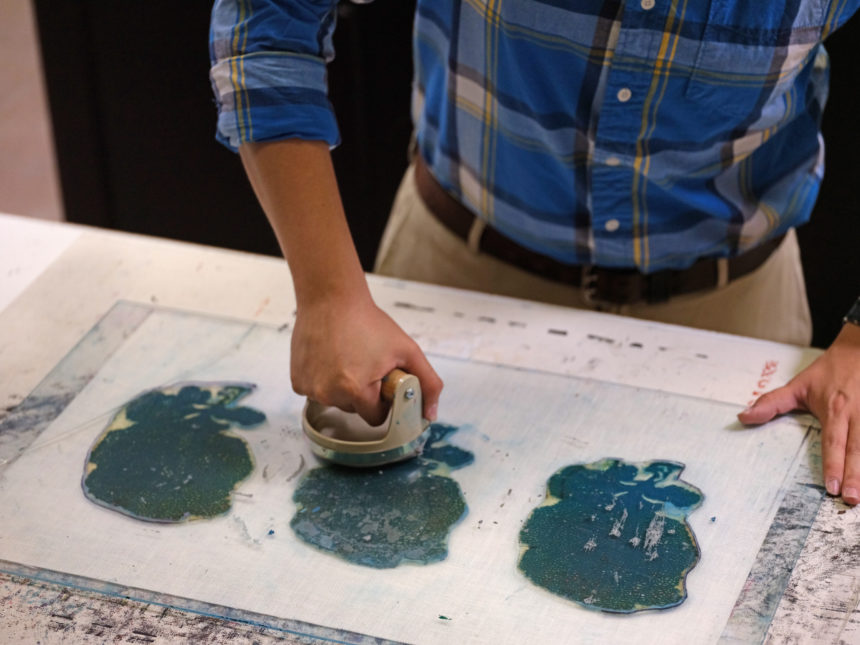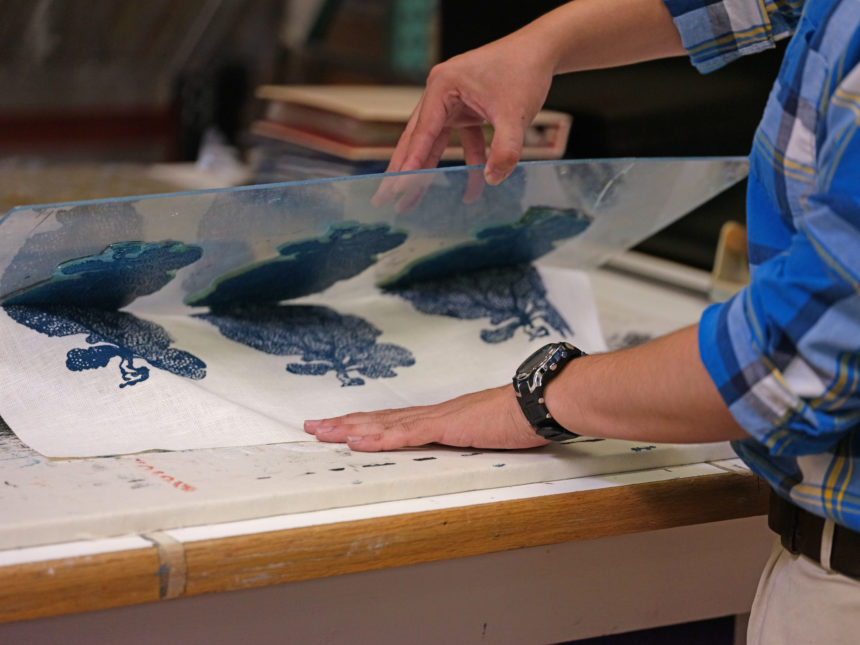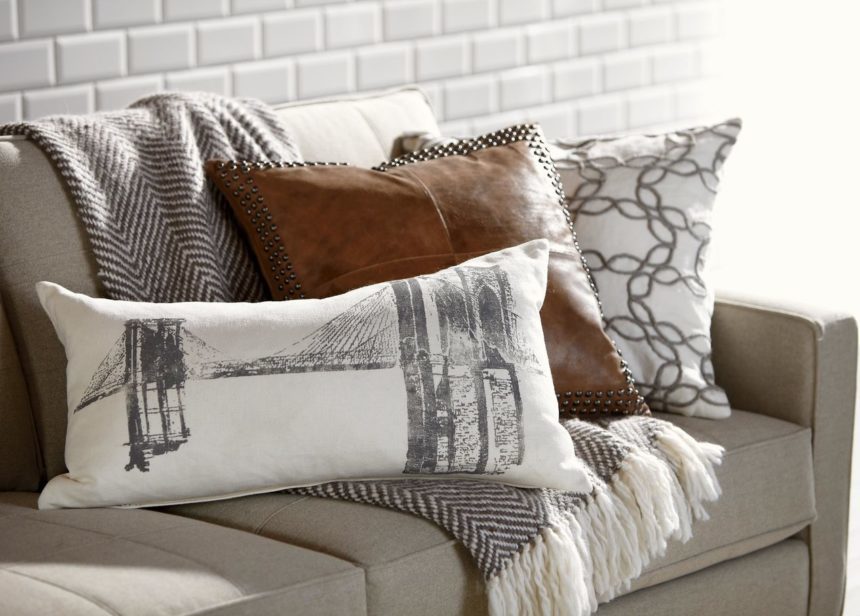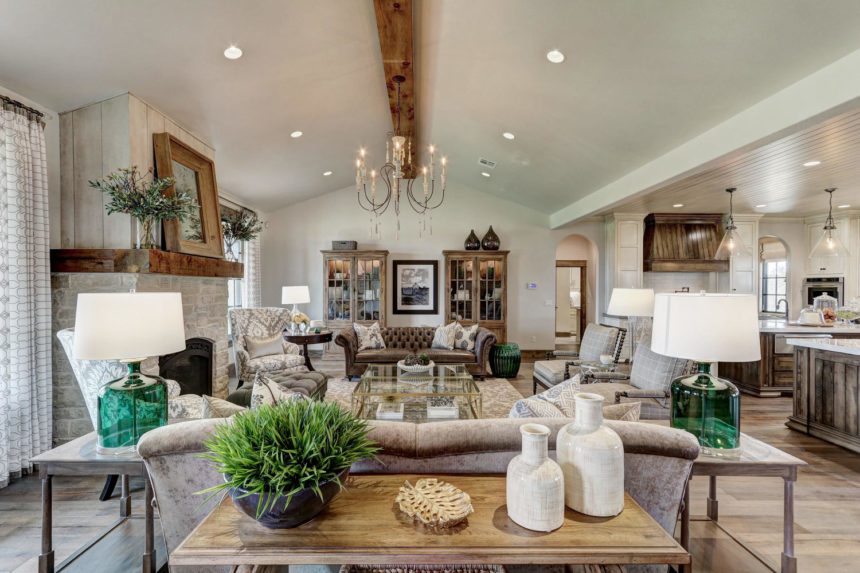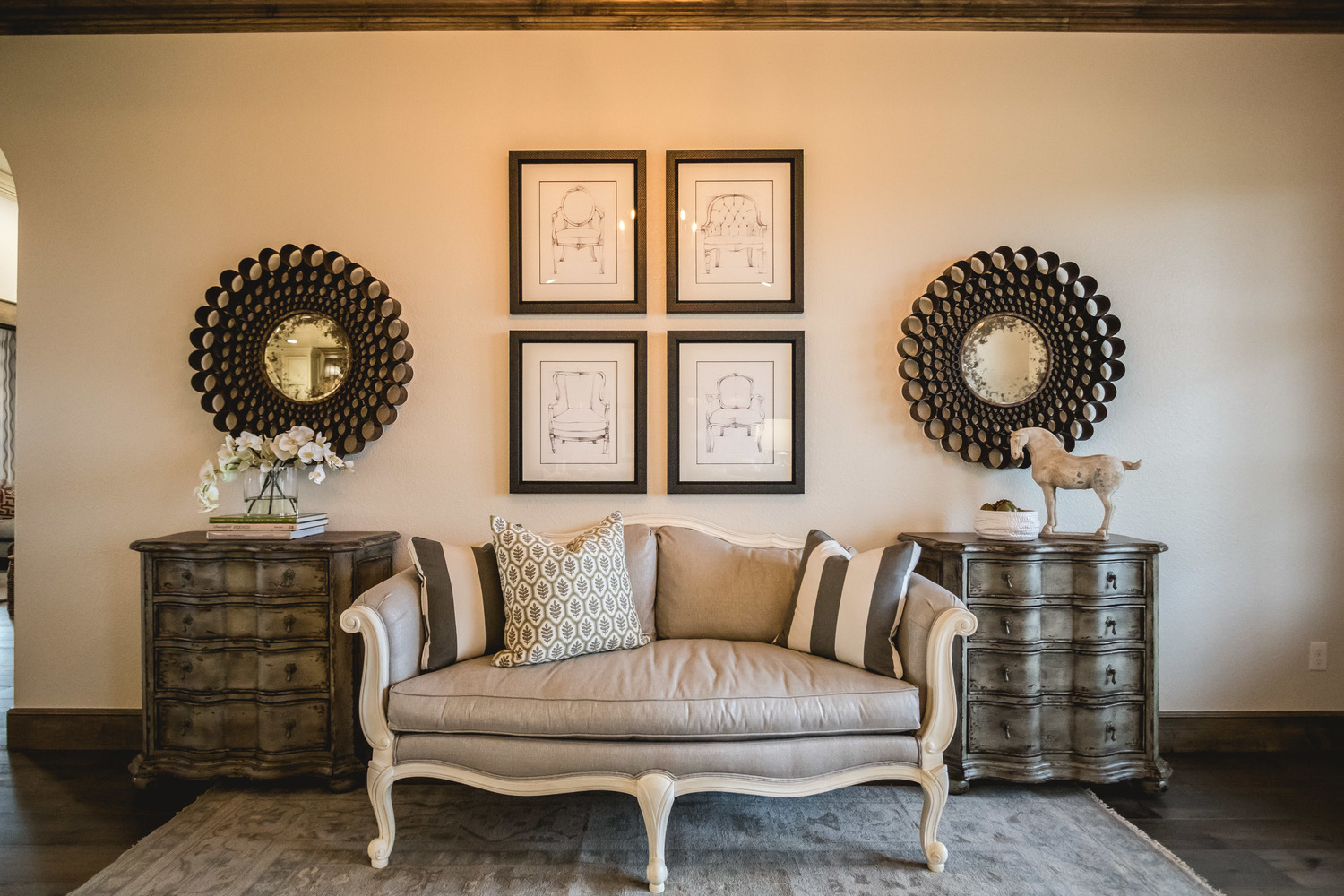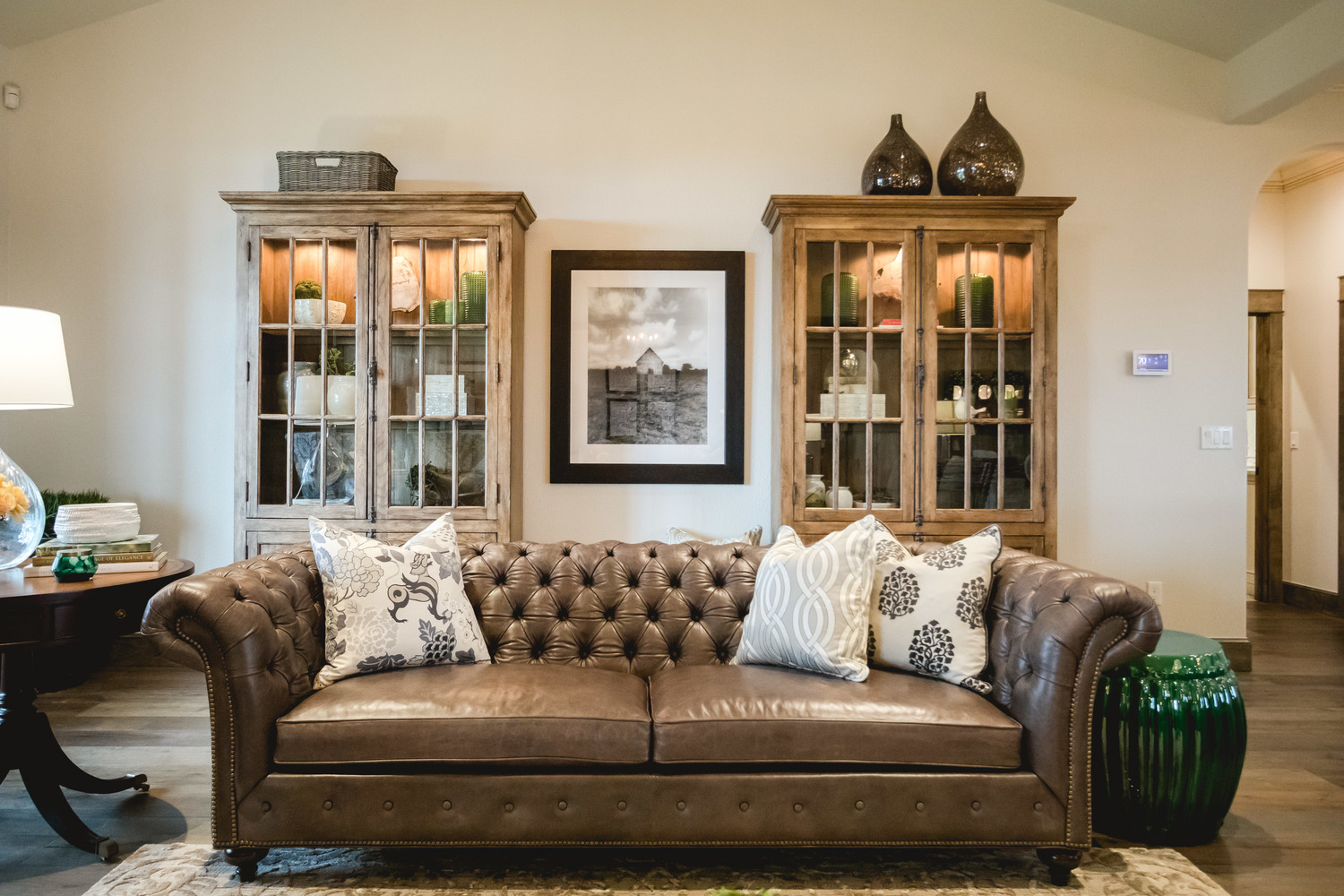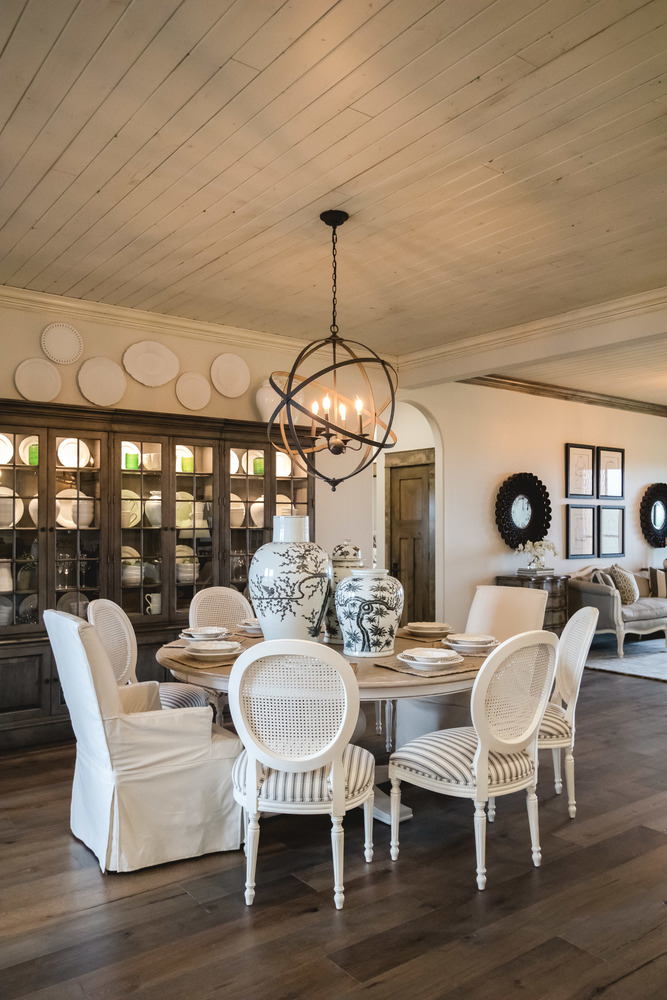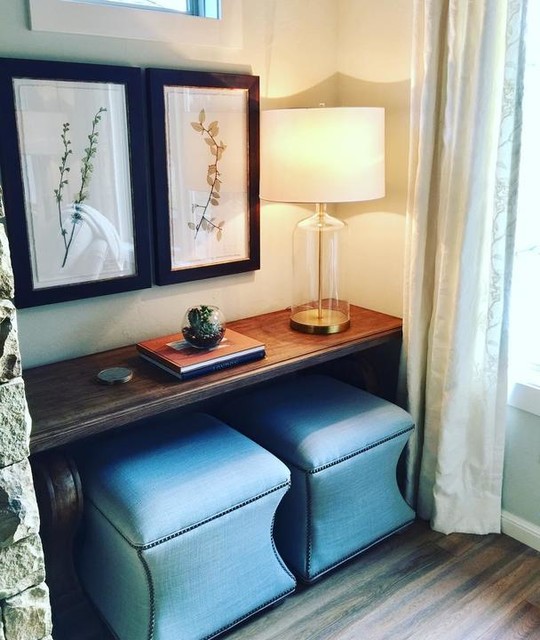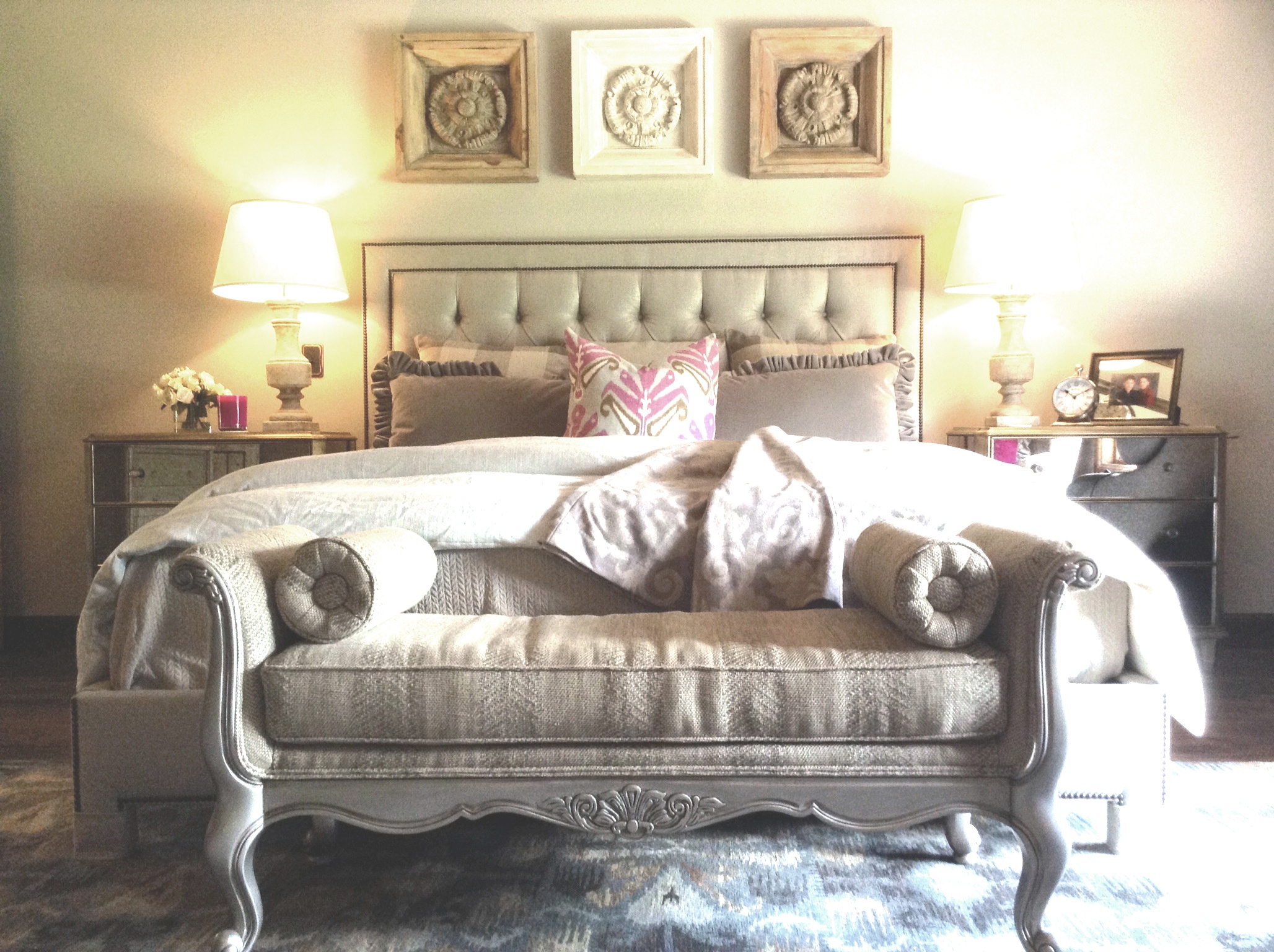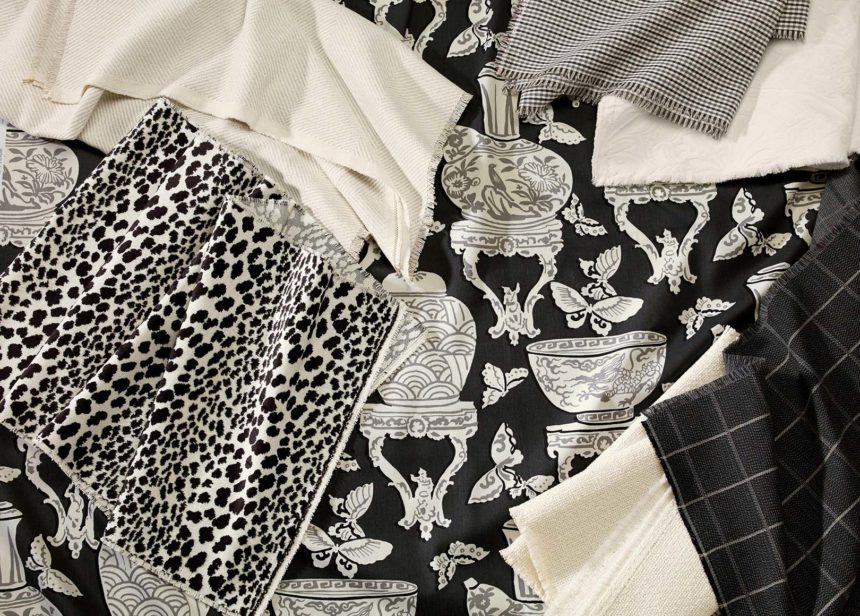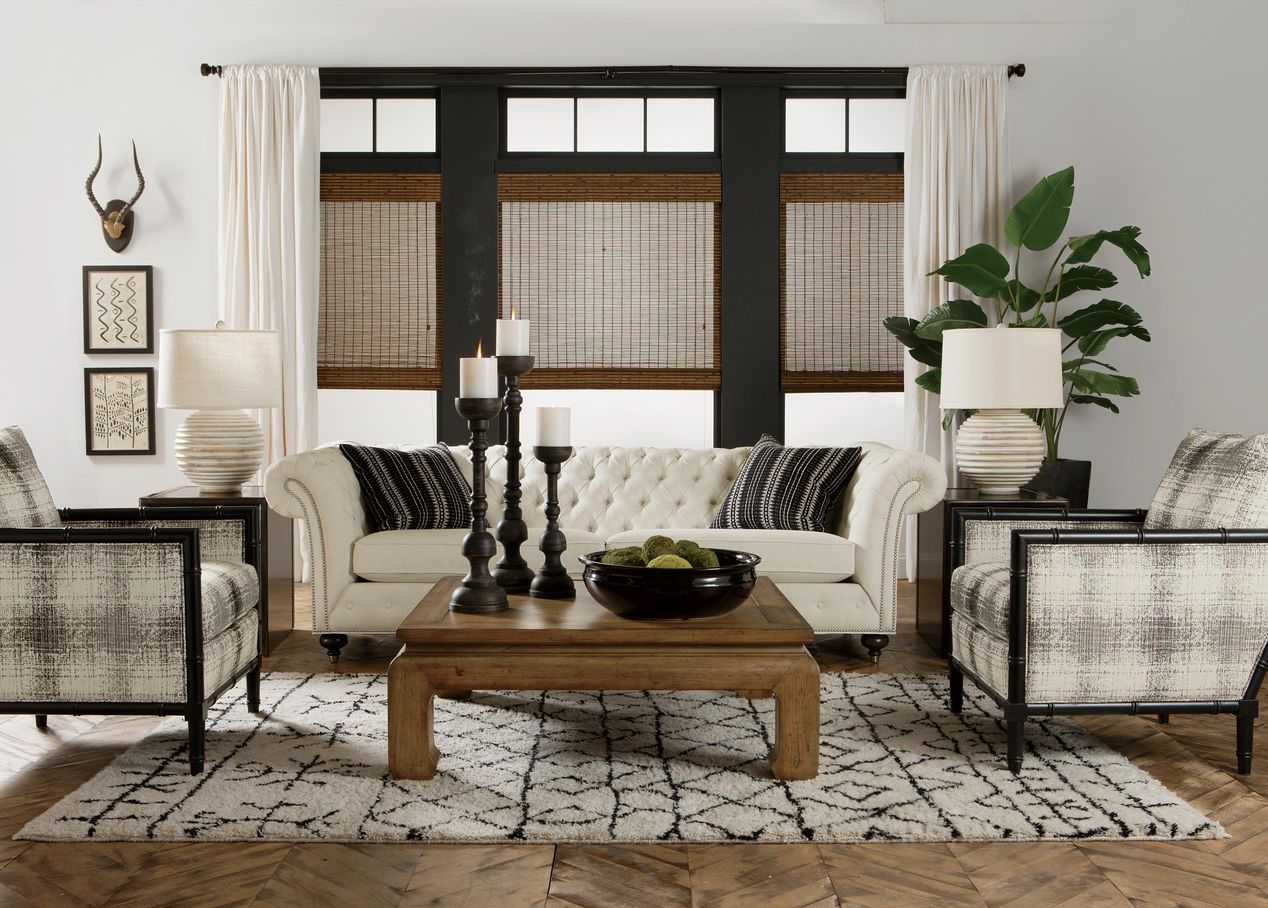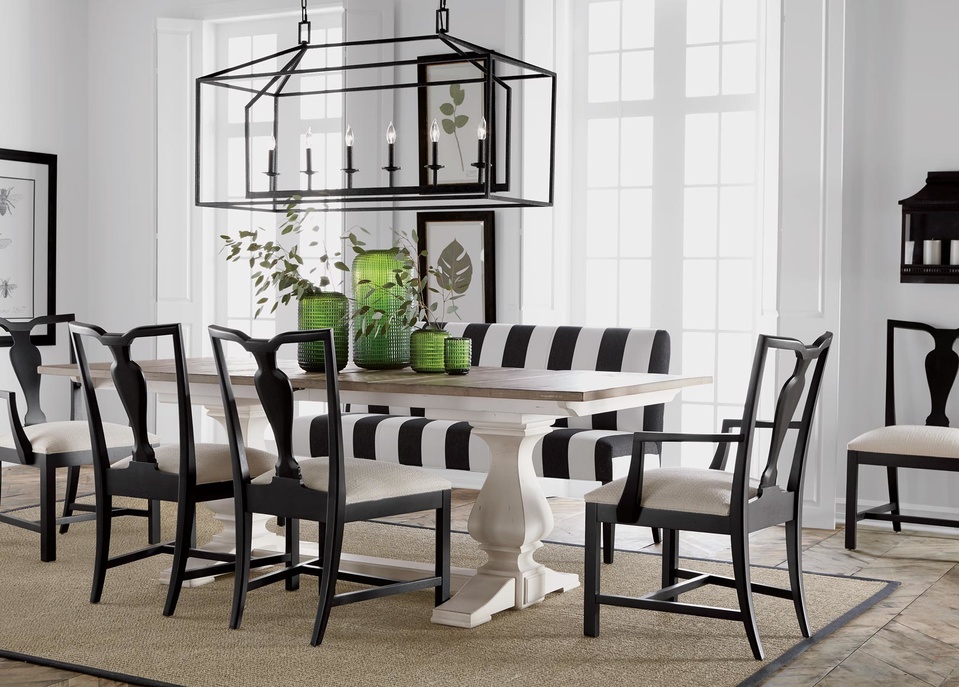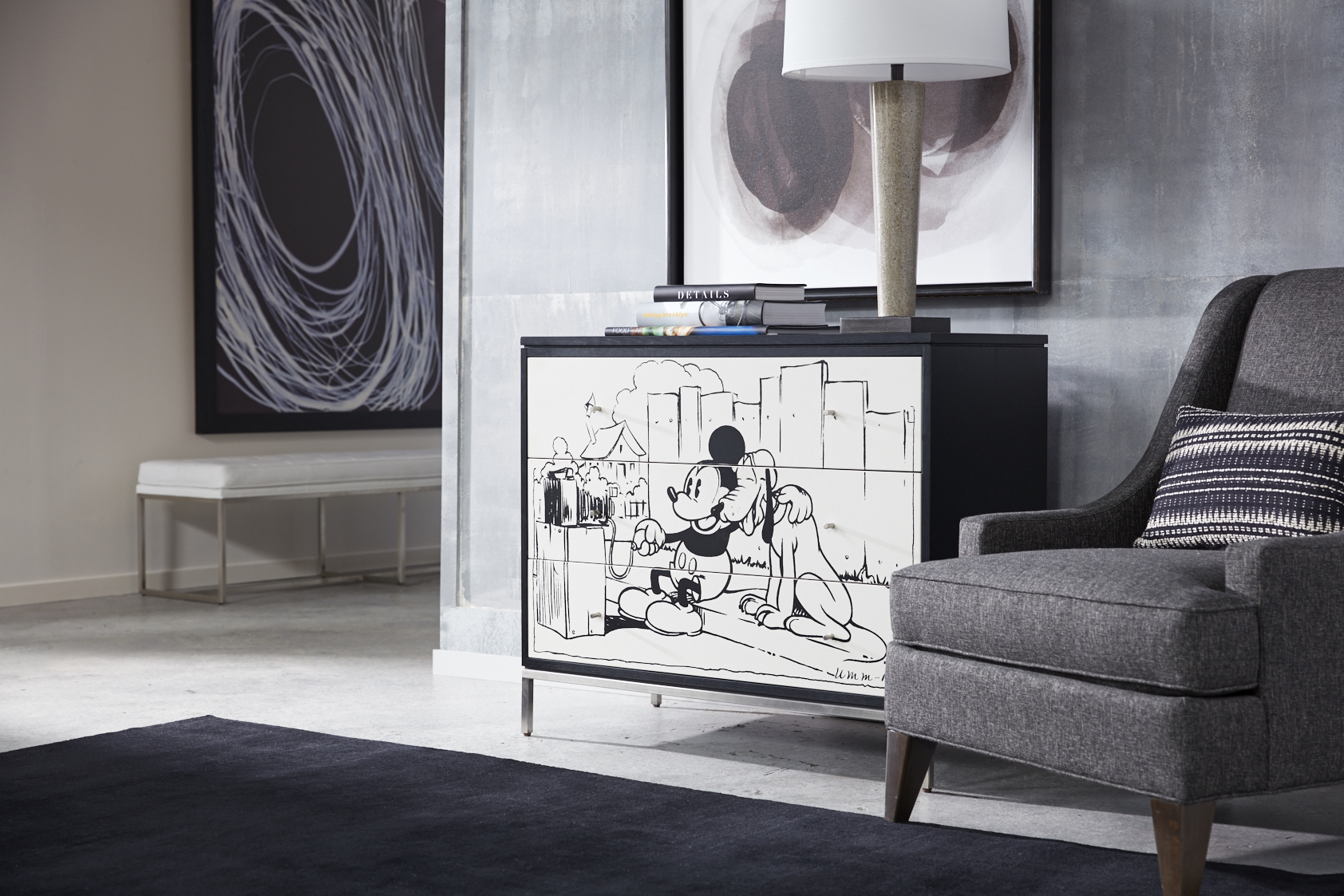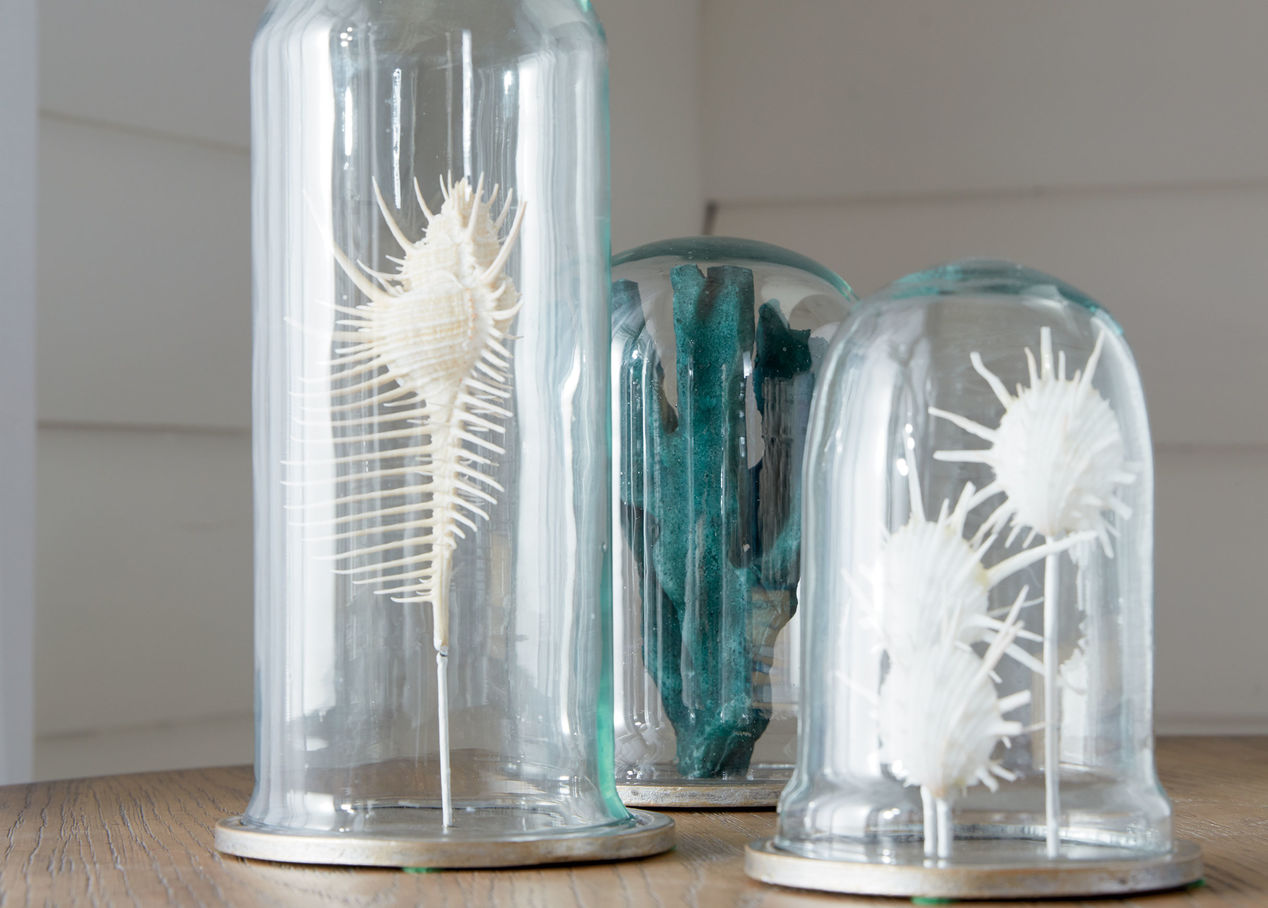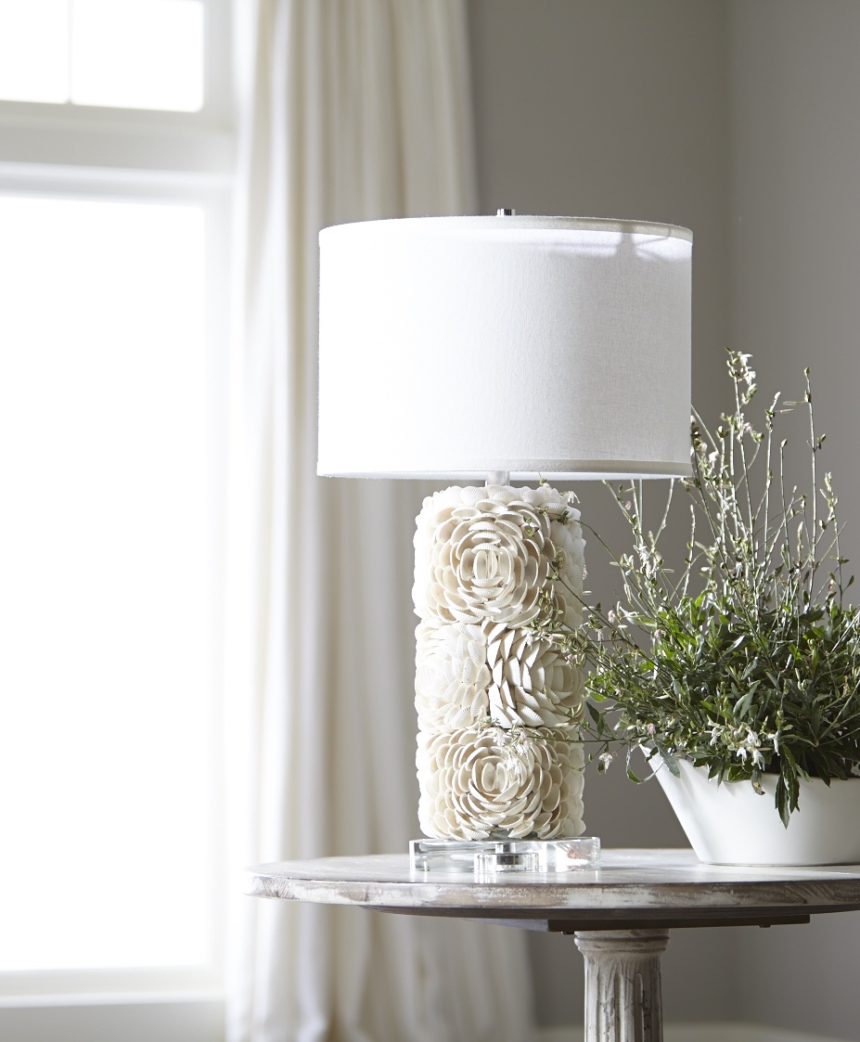The ancient art of block printing has been around for 2,000 years. As a traditional method of textile design, it’s held up surprisingly well. Block printing is essentially the transfer of an image or design (in this case, coral) to a surface (a soft, white linen-and-cotton blend fabric) from a carved material (rubber, although wood is widely used) covered in ink (ours is water-based and nontoxic).

PRINTING OUR PILLOW, STEP BY STEP
An artist starts by carving the coral design into a piece of rubber to create a stamp that can be used again and again. The stamp is then glued to a piece of plexiglass, and ink is rolled out onto the raised stamp, ensuring the pigment is applied evenly. The pillow face fabric is placed on a padded surface, and the plexiglass is then turned over and positioned onto the fabric, inked side down. Pressure is evenly applied to the back of the plexiglass. While the fabric is held down, the plexiglass is then cleanly lifted away. The fabric is hung to dry before being sewn into the finished pillow.
Our Fan Coral Pillow is a contemporary example of the time-honored technique that’s widely associated with India, China, and Japan. The beauty and fine details of the natural sea fan coral are printed by hand onto cloth to produce an original, strikingly modern design—done the old-fashioned way. Our gorgeous block-printed pillows are made close to home, in a workshop in downtown Chicago. Each print is inked by hand, so variations will occur—only adding to the natural beauty of the piece.

